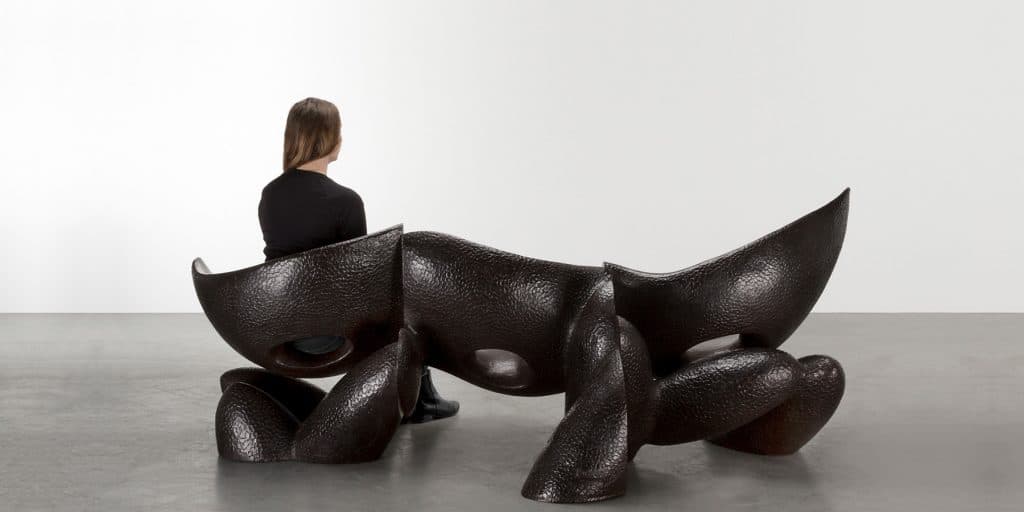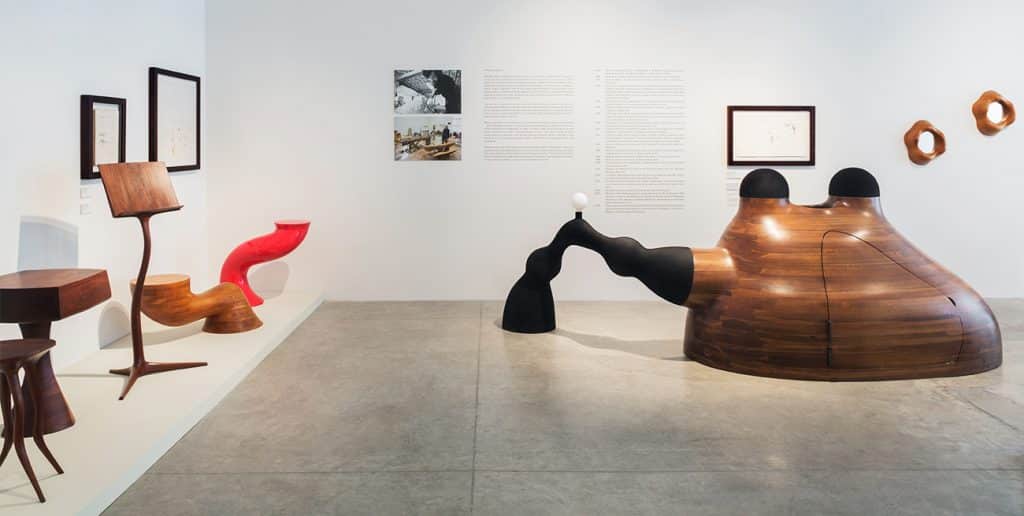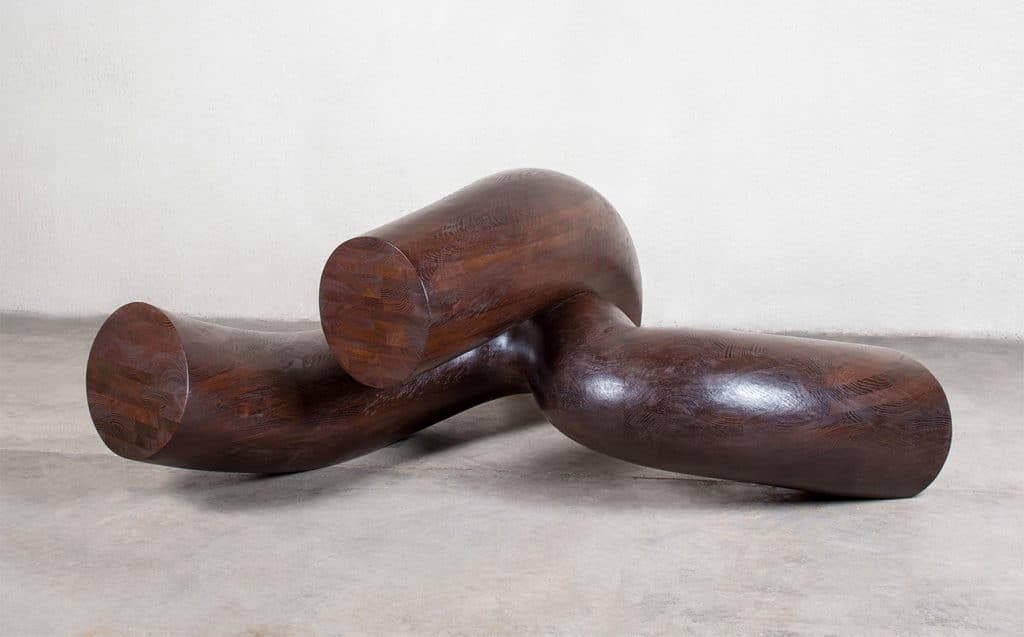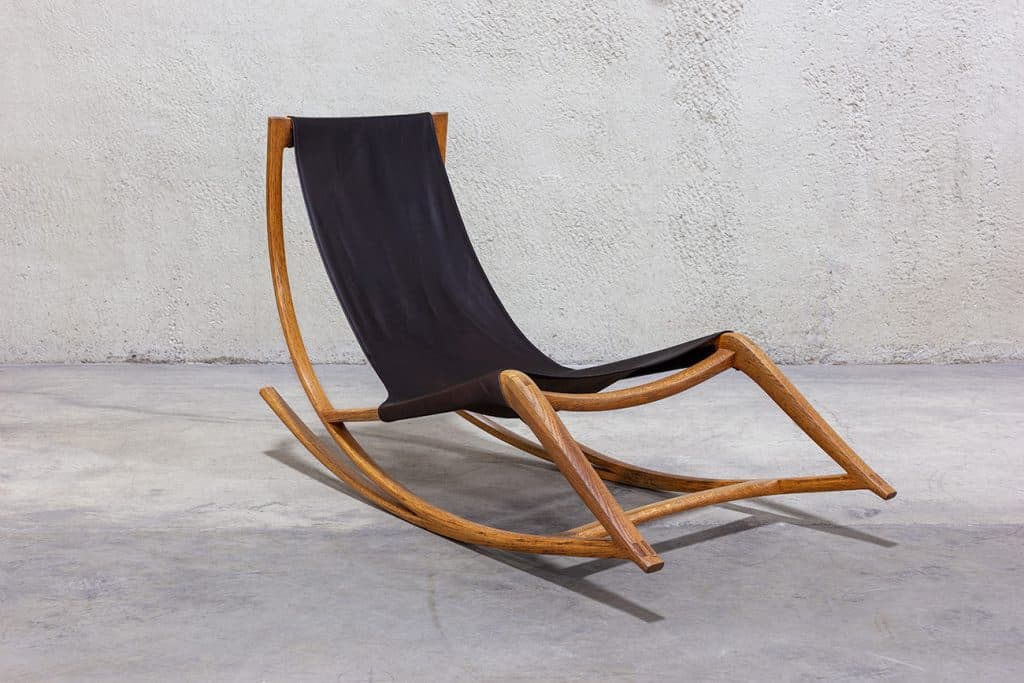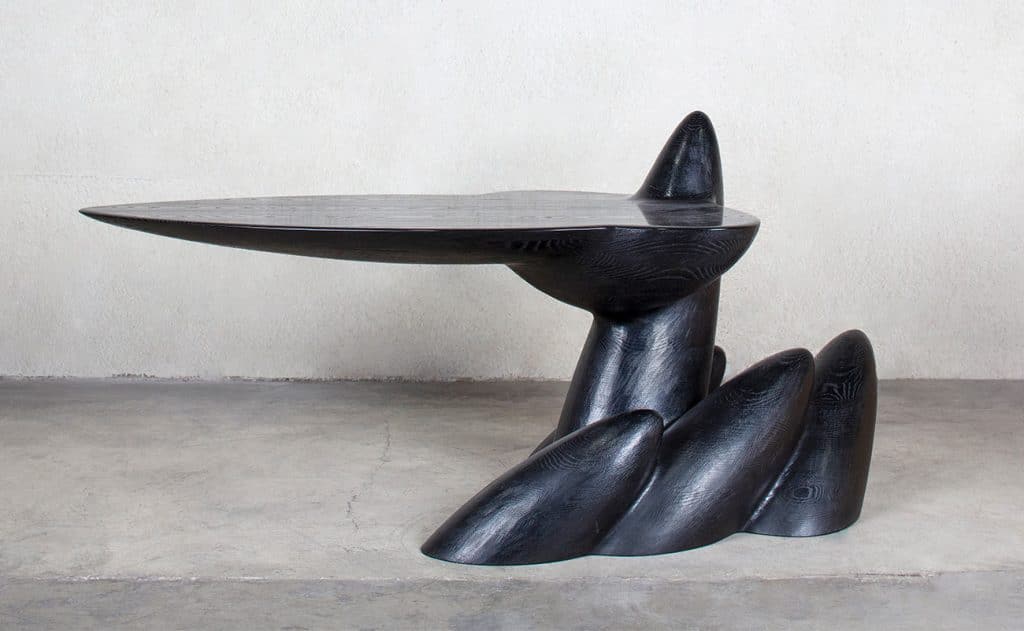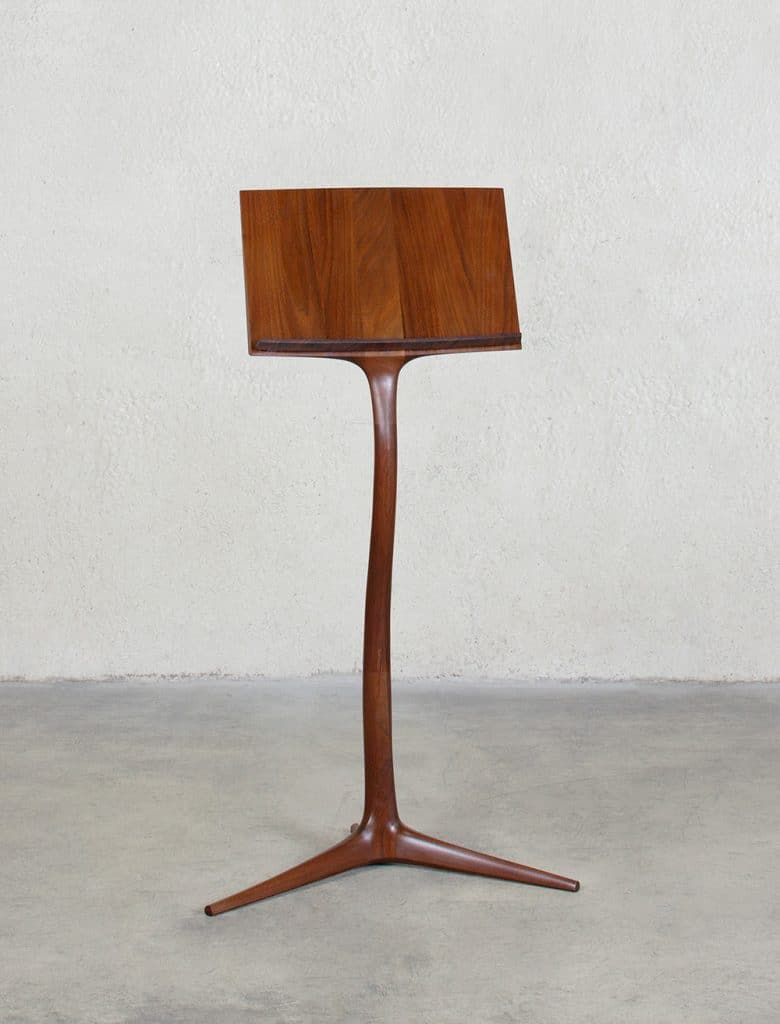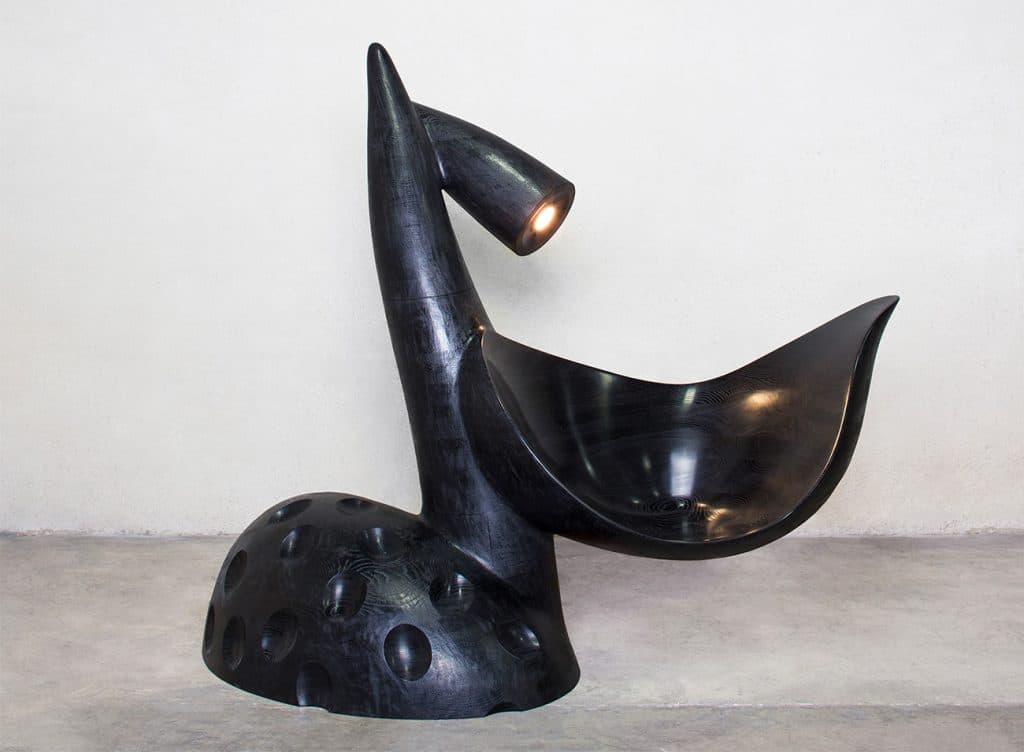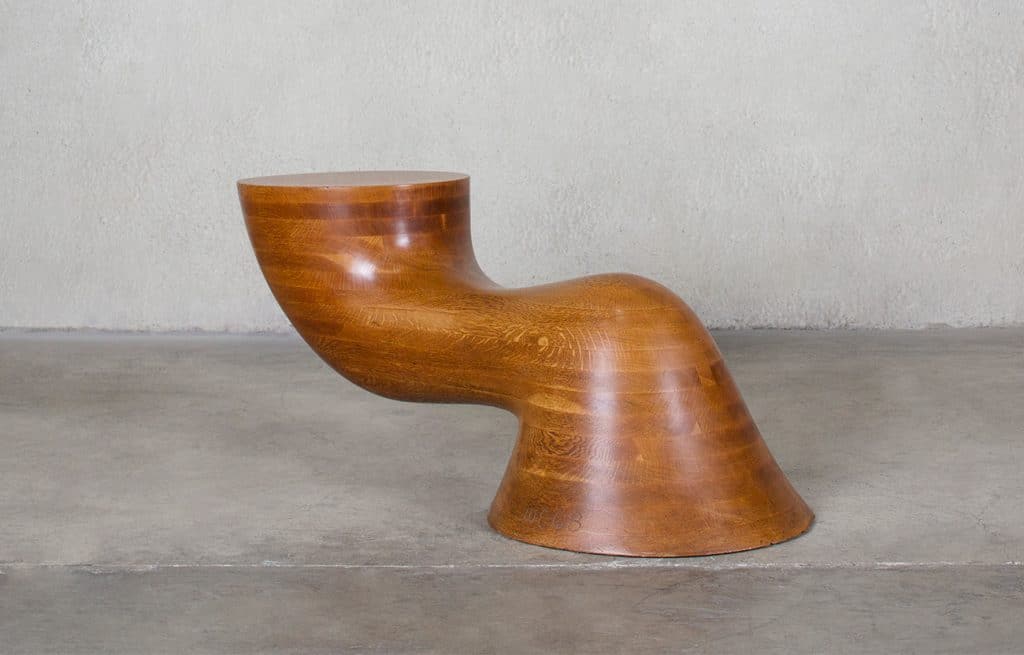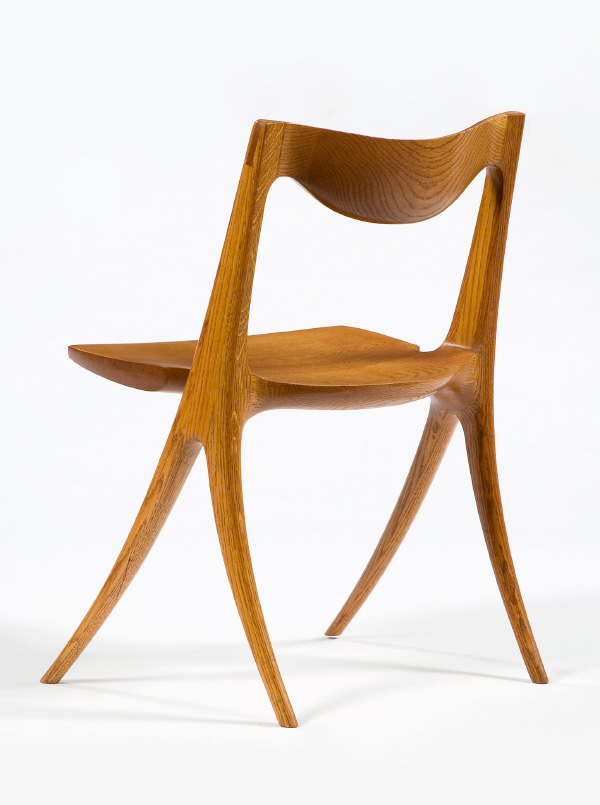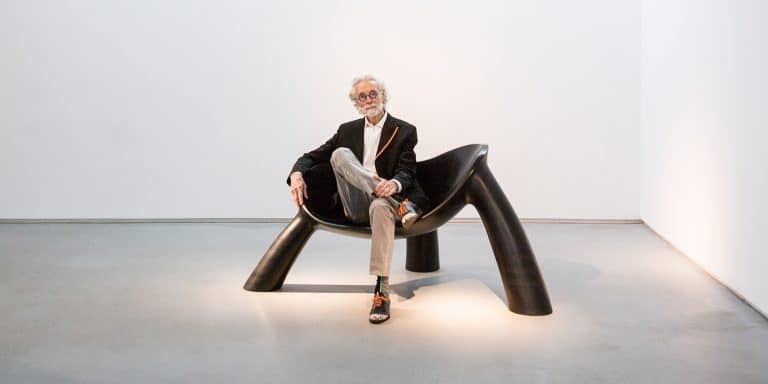September 15, 2019The furniture designer Wendell Castle changed the way we think about making chairs, tables and other objects. For Castle, furniture and sculpture, form and function were one and the same. Unlike his predecessors in the American studio furniture movement — designers like George Nakashima and Sam Maloof, who used traditional methods of carving and joinery — Castle favored stack lamination, gluing together thin, horizontal layers of wood and then carving them; at first, he used a chainsaw, later a robot, to create organic, sometimes whimsical volumes. Castle made his most powerful pieces using this method, in the late 1960s and early ’70s and in the years before his death, at age 85, in 2018. (In between, he produced trompe l’oeil works, like a carved-wood grandfather clock that appeared to be wrapped in a cloth; Pop art–influenced plastic furniture and lights; even a postmodern piano for Steinway.) These key chapters of Castle’s six-decade-long career are the subject of the show “Wendell Castle: A New Vocabulary,” at the New York gallery Friedman Benda through October 12.

American studio furniture movement designer Wendell Castle (above) is the subject of a new show — the first conceived since Castle’s death, in 2018 — up through October 12 at Manhattan’s Friedman Benda gallery. Top: Among the pieces on view at Friedman Benda is A New Seeing, 2015. All photos by Daniel Kukla, courtesy of Friedman Benda and Wendell Castle Inc., unless otherwise noted

Castle created his Walnut Sculpture between 1958 and 1959, when he was in graduate school at the University of Kansas.
This is “the first exhibition that was fully conceived after Wendell Castle’s death. It’s the first look back,” says gallery cofounder Marc Benda, noting that Castle “always wanted to look forward.” The idea, he adds, “was to examine two key periods of his career — the early stack-lamination pieces and the late stack-lamination pieces — and to compare them, although not literally.”
The show, which also includes drawings and models, highlights seminal pieces like the Environment for Contemplation, a blob-like form in laminated wood with a flocked fiberglass “tail.” The 1970 work — designed to sit on the floor, with a small, shag-carpet-lined space you could crawl into — was first seen in “Contemplation Environments,” an exhibition held that year at the Museum of Contemporary Crafts in New York. “It is both cartoonish and profound, a thought bubble and a hand-crafted monument,” writes author, curator and former Museum of Arts and Design director Glenn Adamson, describing the piece in the catalogue for the Friedman Benda exhibition.

A detail shot of A New Seeing shows of the texture of its bronze surfaces.
There are also very early works, like Walnut Sculpture of 1958–59 (when Castle was in graduate school), a delicate but dynamic composition carved from discarded rifle stocks, and the 1964 Music Stand. One of Castle’s early experiments with lamination, this still looks fairly traditional, in contrast to the more abstract pieces he would soon make. As the designer said in the 2018 television documentary Wendell Castle: A Portrait, “I moved the legs [of chairs] out from under the seat, to be sculpture.”

Castle’s Curving Table No. 8, ca. 1969, is made of gel-coated fiberglass, wood and automobile paint.
Pieces from the last years of Castle’s career include the 2016 Motown in stained ash, from the “Misfits” series, in which he took existing models, cut them apart and remixed them, in this case creating a seat with two mismatched halves. Lazy Bones, from 2017, comprises two stained-ash forms that bend and overlap to create what Adamson calls “a defiance of conventional wisdom: a seating form without a seat, which dares to be almost not a piece of furniture at all, nor even really a sculpture, yet somehow a masterpiece.” The later laminated pieces were carved by a robot, but Castle made the models, which were then scanned by a laser. “I never wanted to design on a computer,” he said. “I wanted to keep the blips.”
Castle noted that his process mostly began with drawing — a passion that dated back to his childhood. The designer, who was dyslexic, was quoted in his New York Times obituary as saying that when he was young, he was good at “drawing and daydreaming, neither of which was valued.” Still, he earned a bachelor of fine arts degree in industrial design and a master’s in sculpture from the University of Kansas. As he says in the documentary, though, “I did not want to be a woodworker. I wanted to be a designer.”

Castle created his Environment for Contemplation — which contains a small, shag-carpeted space that one could crawl into — for a 1970 show at the Museum of Contemporary Crafts in New York.
In the exhibition catalogue essay, Adamson points out that, throughout his career, Castle “invented new vocabularies of form, as well as the means to realize them. That he did so in the seemingly restrictive context of furniture design makes his achievement all the more remarkable. He was able to rethink functional objects — tables, chairs, cabinets — into wholly unprecedented gestural compositions.”

Motown, 2016, is from the “Misfits” series of Castle’s later years, for which he cut apart existing models and then mixed and matched them to create new pieces.
Concludes Benda: “The word sculptural is so overused, but it’s a good way to describe his work. The takeaway is that we want to show the versatility of his work, and have people think about the arc of sixty years and what it means for an artist to go that far and that deep with one process.”
